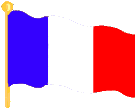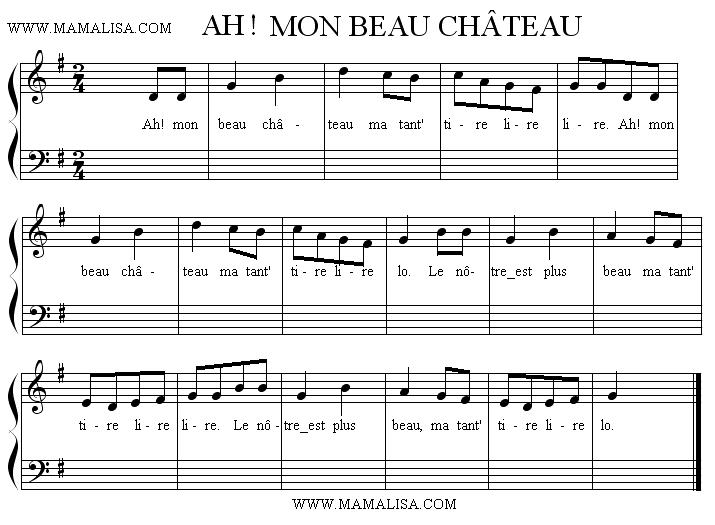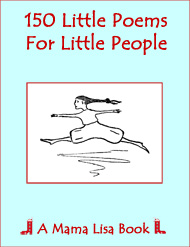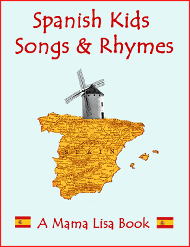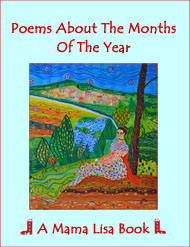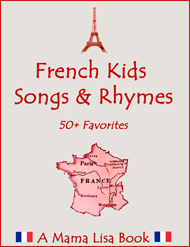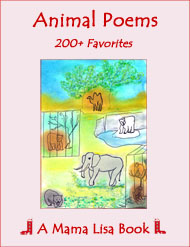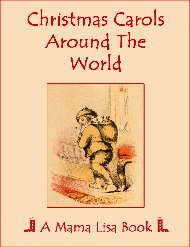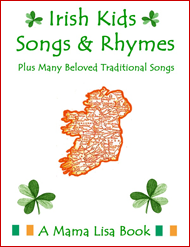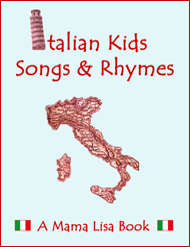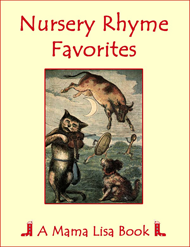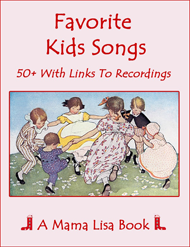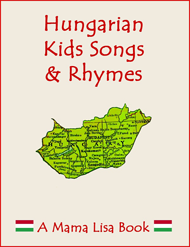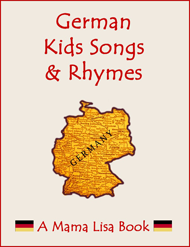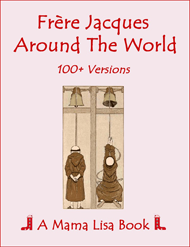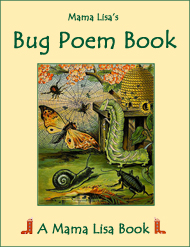Ah ! Mon beau château !
This is normally a girls circle game. The girls make two circles, one smaller than the other, then the two circles turn in opposite directions. The smaller circle sings the first verse and then the larger circle answers with the next verse. You can find the full game instructions below.
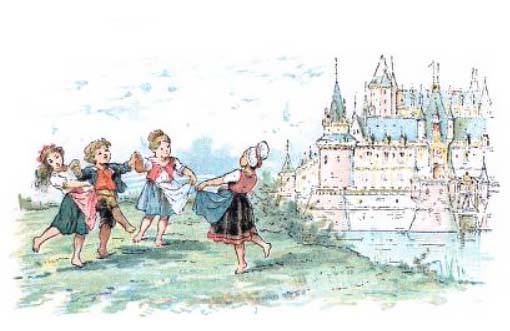
Ah ! Mon beau château !
Oh! My Beautiful Castle!
Danse en cercle
Circle Dance
(French)
(English)
Première ronde :
Ah ! Mon beau château !
Ma tant', tire, lire, lire ;
Ah ! Mon beau château !
Ma tant', tire, lire, lo.
Deuxième ronde :
Le nôtre est plus beau,
Ma tant', tire, lire, lire ;
Le nôtre est plus beau,
Ma tant', tire, lire, lo.
Première ronde :
Nous le détruirons,
Ma tant', tire, lire, lire ;
Nous le détruirons,
Ma tant', tire, lire, lo.
Deuxième ronde :
Comment ferez-vous ?
Ma tant', tire, lire, lire ;
Comment ferez-vous ?
Ma tant', tire, lire, lo.
Première ronde :
Nous prendrons vos filles.
Ma tant', tire, lire, lire ;
Nous prendrons vos filles
Ma tant', tire, lire, lo.
Deuxième ronde :
Laquell' prendrez-vous,
Ma tant', tire, lire, lire ;
Laquell' prendrez-vous,
Ma tant', tire, lire, lo ?
Première ronde :
Celle que voici,
Ma tant', tire, lire, lire ;
Celle que voici,
Ma tant', tire, lire, lo.
Deuxième ronde :
Que lui donn'rez-vous,
Ma tant', tire, lire, lire ;
Que lui donn'rez-vous,
Ma tant', tire, lire, lo ?
Première ronde :
De jolis bijoux,
Ma tant', tire, lire, lire ;
De jolis bijoux,
Ma tant', tire, lire, lo.
Deuxième ronde :
Nous n'en voulons pas,
Ma tant', tire, lire, lire ;
Nous n'en voulons pas,
Ma tant', tire, lire, lo.
First Circle:
Oh! My beautiful castle!
My aunt, tier, leer, leer*.
Oh! My beautiful castle!
My aunt, tier, leer, lo.
Second Circle:
Ours is more beautiful,
My aunt, tier, leer, leer.
Ours is more beautiful,
My aunt, tier, leer, lo.
First Circle:
We will destroy it,
My aunt, tier, leer, leer.
Ours is more beautiful,
My aunt, tier, leer, lo.
Second Circle:
How will you do that?
My aunt, tier, leer, leer.
How will you do that?
My aunt, tier, leer, lo.
First Circle:
We will take your girls
My aunt, tier, leer, leer;
We will take your girls
My aunt, tier, leer, lo.
Second Circle:
Which one will you take?
My aunt, tier, leer, leer;
Which one will you take?
My aunt, tier, leer, lo.
First Circle:
We will take this one,
My aunt, tier, leer, leer;
We will take this one
My aunt, tier, leer, lo.
Second Circle:
What will you give her?
My aunt, tier, leer, leer;
What will you give her?
My aunt, tier, leer, lo.
First Circle:
Some beautiful jewels,
My aunt, tier, leer, leer;
Some beautiful jewels,
My aunt, tier, leer, lo.
Second Circle:
We don't want any,
My aunt, tier, leer, leer;
We don't want any,
My aunt, tier, leer, lo.
Notes
*Translated for the sound of the words. Literally it means, "My aunt, pull, read, read" but it's really meaningless.
I found this version which makes more sense:
Ah mon beau château !
Ma tatan, vire, vire, vire,
Ah mon beau château !
Ma tatan, vire, vire beau.
Translation:
Oh my beautiful castle!
My Auntie, turns, turns, turns,
Oh my beautiful castle!
My Auntie, turns, turns beautifully.
Source: "Chansons populaires de l'Ain" by Charles Guillon (1883)
*****
In some versions there are more verses between the 3rd and 4th verse that go:
À coups de canons… (With cannon shots).
Ou à coups de bâtons… (With whacks of a stick).
Nous le referons… (We'll make it again).
Encor' bien plus beau… (Even more beautiful).
Game Instructions
After the smaller circle offers beautiful jewels and they're turned down, they go on offering other things (beautiful shoes, etc…) until the bigger circle answers, "Nous en voulons bien" ("We will accept them"). Then the girl chosen as "this one" leaves the bigger circle to join the smaller one. The game goes on until the circle that started out as the largest one has only two or three girls left, and thus it has become the smaller one and then the game starts again.
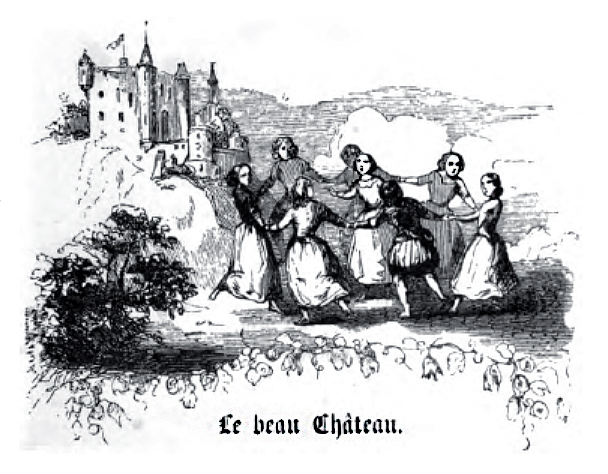

Thanks and Acknowledgements
Thanks to Monique Palomares for the midi tune. Translated by Monique Palomares and Lisa Yannucci. 1st illustration from "Nouvelles chansons et rondes enfantines" (1886) by Jean-Baptiste Weckerlin. 2nd illustration from "Chansons et rondes enfantines" (1859) by Théophile Marion Dumersan and Gustave Jeane-Julien.
Merci beaucoup!


